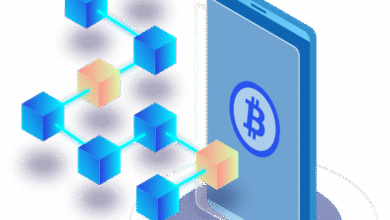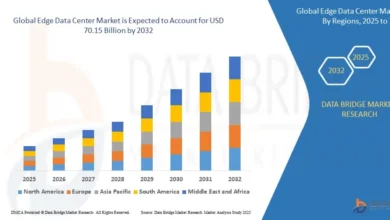IBM Application Modernization: Resilience for the AI-Powered Enterprise
ibm application modernization services

Resilience isn’t just a luxury anymore—it’s essential in today’s ever-changing technology world. IBM application modernization tackles this vital need by transforming outdated systems into flexible, responsive infrastructures that can handle modern challenges. Companies that welcome AI-powered observability and resilience solutions get competitive advantages that go beyond just surviving outages.
Many CIOs and CTOs still worry about investing in modernization because of costs and long timelines. Their concerns persist even though digital expectations keep rising. IBM application modernization services give complete solutions to organizations t
hat need to upgrade their legacy systems. These services, from iseries modernization to specialized IBM i modernization approaches, create paths toward technological resilience.
This piece shows how IBM i application modernization builds resilient, AI-powered enterprises ready to succeed in the complex digital world.
Understanding the Modernization Lifecycle in IBM Environments
The modernization experience begins when you understand how legacy systems should evolve to meet current business needs. IBM application modernization uses a well-laid-out lifecycle approach that reforms outdated systems. This approach minimizes disruption and maximizes business value.
Legacy Application Assessment and Categorization
A detailed assessment forms the foundation of any successful modernization initiative. Organizations should first review their current applications to identify modernization candidates. The process involves creating an inventory of applications and plotting them against difficulty and potential value. Applications with high-value and low-effort become the best candidates to start modernization.
IBM’s ‘Rapid Assessment’ enables organizations to evaluate and categorize their application portfolios in a matter of hours. This assessment provides clear modernization pathways based on high-level criteria such as platform, language, and criticality:
- Refactor: Ideal for mission-critical applications that require transformation into cloud-native architectures.
- Containerize: Best suited for Java-based applications running on traditional application servers.
- Migrate: Applies to applications that can be moved to the cloud with minimal code changes.
- Leave As-Is: Reserved for applications with limited modernization value or those that are stable low-risk.
Modernization Strategies: Rehost, Refactor, Rebuild
Organizations must choose the right modernization strategies after completing the assessment. Each approach offers distinct benefits based on specific needs:
Rehost (lift and shift): Migrate applications to the cloud with minimal or no code changes. This strategy helps scale applications fast when time is limited.
Refactor: Restructure internal code without altering external behavior. It also addresses technical debt without disrupting user experience.
Rebuild: Redesign and redevelop the application from the ground up. This works best when legacy applications can’t meet business needs due to basic limitations.
Role of IBM Application Modernization Services
IBM’s application modernization services give full support throughout the modernization lifecycle. Their expertise includes creating modernization roadmaps backed by proven patterns.
IBM i environments use IBM i Modernization Engine for Lifecycle Integration (Merlin) with specialized tools in Red Hat OpenShift containers. These tools speed up modernization through the automated conversion of fixed-format RPG to free-form RPG. They also integrate with modern DevOps tools like Git and Jenkins and offer containerization features.
Generative AI in Discovery and Design Phases
Generative AI revolutionizes how teams handle discovery and design phases in IBM application modernization. This technology makes traditionally long processes shorter and uses fewer resources and SME time.
Code Comprehension with Minimal SME Involvement
Knowing how to understand legacy applications with minimal involvement of subject matter experts (SMEs) speeds up modernization projects. SMEs usually focus on system maintenance, but their knowledge might be limited by the duration or scope of their involvement. Generative AI helps analyze legacy codebases to uncover application functionality, integration aspects, and logic complexity. AI tools can generate meaningful insights even with outdated or incomplete documentation.
Domain-Driven Design Using AI-Powered Decomposition
IBM application modernization services utilize AI to map functional capabilities to legacy application contexts. This accelerates and enhances domain-driven design and decomposition efforts. Generative AI links domain capabilities to code and data artifacts to promote a clearer understanding of how business functions are implemented in legacy systems. AI also helps create target designs for specific cloud service provider frameworks through standardized patterns that include ingress/egress, application services, and data services.
Process Mining and Event Storming with AI Assistance
Event storming, vital for domain-driven modernization, needs complete process maps. Generative AI helps by contextualizing extracts from process mining tools. This helps teams visualize workflows and identify key business events.
Teams run DDD (Domain-Driven Design)-based event-storming sessions to identify microservices for IBM i modernization initiatives. This ensures that application-enabled processes and capabilities directly inform the modernization scope. AI then helps map capability dependencies for data and services, letting teams sequence capability build-outs effectively.
AI-Driven Automation in Build, Test, and Deployment
AI technologies have revolutionized how IBM implements application modernization. The new approach streamlines code generation, testing, and deployment processes. This results in lower costs and better quality.
Spring Boot Code Generation from MuleSoft APIs
IBM’s generative AI-based accelerator makes it easier to convert MuleSoft APIs into Java Spring Boot applications. The tool first builds a deep understanding of API components and logic before it finalizes response structures and code. It creates Spring Boot code that meets API specifications through a well-arranged process. The output is clean, optimized code that follows best practices.
This accelerator works with utmost accuracy when it comes to small and medium-sized MuleSoft applications. The tool creates UI for required interaction channels that work with APIs. It also produces detailed design documentation with sequence diagrams, request-response details, and architecture insights.
Automated Test Case and Test Data Generation
AI-powered testing tools now create and confirm test cases automatically, which saves time and reduces manual labor. IBM’s Test Accelerator for Z streamlines the entire testing lifecycle, from unit testing to integration testing.
IBM watsonx Code Assistant for Z is expanding its capabilities to include automatic test case generation for newly developed COBOL and Java services. These AI systems analyze source code to identify which components need testing. They spot potential problem areas and prioritize test generation for maximum coverage and impact. Machine learning models adapt to code changes continuously. This enables faster regression testing, requiring fewer manual updates to test scripts.
Infrastructure-as-Code Templates with Security Controls
IBM Cloud offers reliable Infrastructure as Code (IaC) features that automate how infrastructure resources are set up and configured. IaC creates reusable templates instead of manual configuration. Teams can control versions, test, and deploy these templates faster and more consistently. This method lets teams handle infrastructure like software, using tools such as Git, Jenkins, and Ansible. IBM Cloud also integrates security checks early in the development lifecycle.
Pipeline Configuration and Deployment Automation
Generative AI improves CI/CD pipelines by predicting when things might go wrong and suggesting fixes for smoother releases. IBM’s watsonx pipelines help users build repeatable flows. These flows automate everything from data ingestion to model training, testing, and deployment.
Enterprise-Scale Resilience and Planning with AI
Modern organizations need detailed tools that work in enterprise environments of all sizes. IBM application modernization services now employ AI to boost resilience at enterprise scale. This helps organizations make evidence-based decisions faster.
Roadmap Generation from Historical Patterns
Many organizations face critical challenges when creating a macro roadmap for modernization programs. AI tools now analyze historical data to create practical modernization roadmaps that balance:
- Parallel execution versus sequential dependencies
- Co-existence scenarios requiring special handling
- Applications-to-domain area mappings
- Effort and complexity estimates
These AI-generated roadmaps are continuously aligned with Program Increments (PIs). They incorporate execution-level inputs that would be impractical to manage manually.
Security Validation from Logs and IaC Analysis
AI-powered log analysis keeps systems, applications, and people safe from cyberthreats including phishing, ransomware, and malware. Companies that used AI security and automation extensively saved about $2.2 million on average. AI tools scan Infrastructure-as-Code configurations, platform logs, and design specifications to accelerate security validation processes that once needed extensive manual review.
Custom Accelerators for IBM i Modernization
An IBM i modernization company offers specialized accelerators for legacy systems. Services like AS400 APIfication aid faster information exchange through future-ready architecture. These custom accelerators for IBM i application modernization include user interface upgrades that boost customer experience and RPG modernization tailored to specific business needs.
Conclusion
Modernizing IBM applications needs careful planning and execution. Companies that adopt IBM application modernization get benefits far beyond basic system updates.
AI speeds up the modernization lifecycle dramatically. Assessment phases now take weeks instead of months. Code comprehension needs minimal SME involvement, which lets valuable resources focus on innovation rather than maintenance.
The financial rewards make a compelling case. AI-driven approaches improve migration efficiency and minimize API costs. Companies get faster returns on modernization investments.
An IBM i modernization company provides specialized solutions for legacy environment challenges. These include RPG modernization, user interface upgrades, and AS400 APIfication—essential parts of detailed modernization strategies.
Generative AI has altered the map of the entire modernization process. AI tools boost every phase from the original assessment through roadmap creation, testing, deployment, and security validation. Companies reach modernization goals faster and more precisely than ever before.
Companies that choose AI-powered IBM i application modernization services today build long-term resilience. This steadfast dedication helps them respond to market changes, customer expectations, and competitive pressures with unprecedented agility and confidence.




